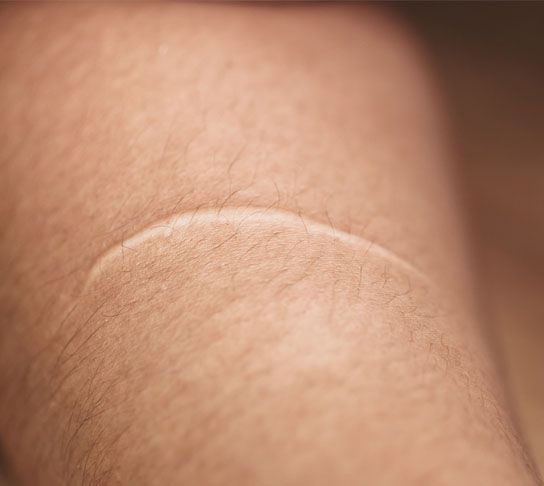Scar revision
PD Dr. Richard Fakin / Plastic Surgery / Scar revision
Scar revision
Madrid | Zurich
Scars may result from accidents, surgical procedures, or even inherent skin conditions, potentially leading to highly visible, painful marks or functional limitations. Numerous factors influence scar formation and subsequent revision, including anatomical location, suturing techniques, postoperative care, treatments applied, and the patient’s genetic predisposition.
In many cases, scar correction can be planned from the day of the initial surgery or scheduled later to enhance the appearance and elasticity of the affected area. Aside from aesthetic concerns, it is also crucial to address functionality and the psychological impact a scar may have. To achieve optimal outcomes, techniques such as mini-lifts, lipofilling, thread lifts, growth factors, injectables, and various dermatological treatments can be employed.
Length
20 – 90min
Discharge
Same-day
Fit to go back to work
next-day
Fit for everyday activities
1-2 days
Anesthesia
Local/General sedation
Recovery time
up to one month
Types of scars
A scar takes about 12 months to form and its final aspect can have negative psychological, functional and aesthetic consequences. The scar healing process can result in poor skin quality with a functional impairment.
Hypertrophic scars
Often present as red, raised, and wide lesions, confined to the boundaries of the original wound..
Keloid scars
Commonly arise after burns, leading to tissue retraction and potential limitations in mobilit
Scar contracture
They are often the result of burns. The skin contracts and pulls together the neighbouring tissue, hindering mobility and dermis elasticity.

Acne marks
Smaller scars, frequently concave, featuring pits or depressions that alter skin texture.
To learn more about our scar revision procedures, see our Instagram posts.

Treatments and post-operative care
Nowadays, there is a wide range of surgical and non-surgical advanced procedures to correct scars and tattoos. The effectiveness of each technique will depend on the type of scar, its location and scar longevity among other conditions. An interdisciplinary (alongside dermatologists) and personalised assessment will define the most suitable treatment for substantially correcting scars.
Corticosteroid injections
Are especially effective when treating keloid or hypertrophic scars. The injection treatment requires specialized technology, applied with or without local or topical anaesthesia. The therapeutic cycles are based on an established calendar.
Surgical excisions
Aesthetic and/or functional surgical corrections can be performed in various ways, such as surgical excisions, using local or regional flaps, skin expanders, skin graft and many others.
Fat grafting
Fat can be transformed and transferred in different graft sizes to restore lost volume beneath the depression or adherent scars. It is important to mention that fat tissue is rich in growth components and stem cells, which are useful for dermis and colour restoration as well as its shape and elasticity.
Fat grafting has a biological impact at cellular level, making it an unprecedented reconstructive treatment, both as solitary procedures or combined with others. This procedure produces minimal discomfort and can be performed under local anaesthesia, delivering excellent aesthetic results.
Advanced scar treatment products
A comprehensive range of silicone patches, dermatological and pharmaceutical products are available to our patients.
Compression garments
This type of product is highly effective preventing keloid and hypertrophic scars and when treating scars caused by burns.
Minimally invasive procedures
There is a wide range of dermatological treatments available, such as: laser, medical skin peel, platelet-rich plasma, needling to stimulate collagen production, among others. Each one of these treatments stimulates skin renewal by inducing collagen production and skin renovation.
To learn more about our scar revision procedures, see our Facebook posts.


